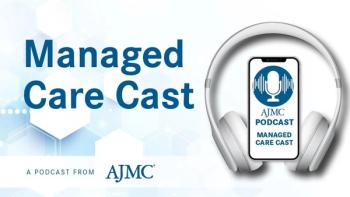
Evidence-Based Diabetes Management
- December 2016
- Volume 22
- Issue SP15
Existing DSME Network Could Create Foundation to Scale National Diabetes Prevention Program Across 50 States
The American Association of Diabetes Educators has offered extensive comments to CMS on how Medicare reimbursement of the Diabetes Prevention Program should occur, so that community groups offering the program financially thrive.
An existing network of 3500 sites that offer diabetes self-monitoring education (DSME) and support could form a foundation to deliver the National Diabetes Prevention Program (National DPP) nationwide, once Medicare starts funding it in 2018,1 according to officials with the American Association of Diabetes Educators (AADE).
AADE’s director of prevention, Joanna Craver DiBenedetto, outlined the benefits of tapping this network during AADE16, the association’s 2016 annual conference, which was held in San Diego in August.2 In an interview with Evidence-Based Diabetes Management™, DiBenedetto and vice president of science and practice, Leslie E. Kolb, MBA, BSN, RN, discussed how AADE’s support for its 14,000 members and the existing sites could be pivotal in scaling the National DPP across the diverse population at risk for diabetes.
Although CMS finalized eligibility criteria for the Medicare DPP on November 2, 2016, it left several details to be resolved in 2017. These include:
• The reimbursement schedule, which will likely be included in the 2018 Medicare Physician Fee Schedule
• Details for how CMS will measure and reimburse digital programs, which are expected to play a significant role in Medicare DPP
• How programs that lack full CDC recognition will participate. For now, CMS said only programs with CDC recognition can be paid, but that this would be revisited.3
An estimated 22 million individuals over age 65 had prediabetes in 2010,4 and reducing the number who progress to the disease is priority for officials with Medicare, where diabetes accounts for $1 of every $3 spent.5 In March 2016, HHS Secretary Sylvia Mathews Burwell announced that Medicare would start paying for the National DPP after a demonstration project with the Y-USA found savings of $2650 per participant over 15 months.6
While it seems logical that diabetes education and prevention would go hand-in-hand, Kolb and DiBenedetto said that adding another program to the Medicare billing process could be more complex than some educators expect. “Since we’re a membership organization, we want to make sure our members are equipped to oversee and/or deliver this program,” DiBenedetto said, and part of that is knowing where DPP fits within the structure of an existing organization.
In formal comments submitted to CMS, the organization has encouraged federal officials to learn from AADE’s experience, and it has recommended key changes to Medicare’s DPP proposal, with an eye toward reaching more people and allowing programs to financially thrive.7 AADE draws on distinct strengths: first, it has gleaned insights from the operations of the DSME sites it has accredited, some of which have closed due to reimbursement and regulatory challenges. Second, it has published evidence of its success with DPP, having received a CDC grant in 2012 to bring the prevention program to DSME sites.7,8
With self-management education, DiBenedetto said in the interview, “We’ve learned that just because you build it, doesn’t mean they’ll come.” If one of Medicare’s goals with DPP is longterm cost avoidance, removing barriers to participation makes sense, according to interviews and materials submitted to CMS. In its comments, for example, AADE sought confirmation that the service will not require an out-of-pocket expense for those with prediabetes.7
How Medicare sets up the program and reimbursement—from which it formats funds according to whether patients can “self-refer”—will also shape how commercial insurers design their programs, and who takes part, according to interviews and submitted comments. For both Medicare and employer-based DPP programs to fully engage patients, they need designs that retain people for an extended period, from the time they are screened through enrollment and instruction, as well as during the ongoing support phase, an area that Kolb said needs far more attention. But if well-executed, the DPP could end up addressing diseases well beyond diabetes, DiBenedetto said. “It’s really exciting to know that diabetes prevention is potentially paving the way for other preventive services to be looked at as valuable and offering cost savings,” she said.
Why Offer DPP at the Existing Sites?
In her August presentation,2 DiBenedetto outlined several reasons why including diabetes prevention in AADE’s accredited DSME sites would be an efficient way to reach people who need the DPP:
• Educators billing Medicare for diabetes self-management training (DSMT) already have a National Provider Identifier (NPI), which CMS proposes requiring for providers. (AADE has, however, written that requiring sufficient training will do more to ensure quality than an NPI.)
• Surveys by AADE show that 80% of its members already take part in prevention activities—but only 0.4% are being paid for it.
• Sites offering DSME make up nearly half of the DPP programs (30 of 61) that have received full recognition by CDC. This is a time-consuming process that requires site administrators to submit data showing that participants have lost 5% of body weight. DiBenedetto said AADE’s knowledge of what it takes to move from “pending” to “full” CDC recognition will be critical in assisting more sites in gaining this designation, which will be important for reimbursement.
• At AADE sites, 75% of the diagnoses of prediabetes are made with a blood test, which puts the group’s sites well ahead of CDC requirements that 50% of diagnoses be made this way. • Patients screened for prediabetes who end up being diagnosed with type 2 diabetes can be immediately referred for DSME.
Seeking Flexibility in Design, Reimbursement
Since the results of a 2002 study in the New England Journal of Medicine demonstrated the effectiveness of the DPP,9 advocates for payer coverage have discussed the need to balance the program’s core benefits—its low cost and its community-based delivery model—with the needs of public payers to ensure quality and avoid fraud. On a per-patient basis, DPP is not a high-cost program: AADE estimates an average of $300 to $470 per person, and the group plans to report cost-effective findings in 2017.7
for new DPP programs, based on its experience with DSMT in Medicare, where low reimbursement rates and long payment delays, even after accreditation, have caused 219 of 750 programs
However, as noted in comments to CMS, the demonstration project with the Center for Medicare & Medicaid Innovation did not include the costs of scaling DPP across a network, nor did it include the cost of becoming a Medicare provider (or supplier, in the program’s vernacular). Although AADE doesn’t seek reimbursement for these costs, it does suggest more flexibilityto close since 2014.
CMS’ original plan for DPP, contained in the proposed 2017 Physicians’ Fee Schedule released in June,1 seeks a value-based design that attaches 50% of payment to patient outcomes. AADE supports an outcomes-based concept, but recommends a schedule that gives new programs more breathing room on the front end, with 25% of the payment tied to outcomes in the first year. Also, the group recommends increasing overall payment by 15%.7
In the interview, DiBenedetto said AADE is “on the same page” as other community-based DPP organizations—the lifestyle coaches who deliver DPP should be trained by a CDC-approved organization, but they can come from a variety of backgrounds. Both she and Kolb say Medicare should allow different types of programs to flourish; some patients will succeed in a face-to-face setting, while others will prefer a digital format. Other comments deal with practical concerns, such as how will a requirement for a “year-long program” deal with the “snowbirds” who live in warmer states during winter months?
Just after submitting its comments, AADE published its study results showing how well DPP worked when offered in accredited programs that meet CDC recognition standards.8 Results gathered across 25 sites over 3 years found participants lost 5.63% of their body weight on average, and 92% attended at least 4 sessions.4 CDC’s minimum standards require participants to lose 5% of body weight, which is the level CMS will require for performance-based reimbursement.7
As noted in the study, about half of the sites that have full CDC recognition for delivering DPP are nationally certified DSME programs, “which fit the AADE model.”7 Thus, a quarter of CDC’s fully recognized programs—which meet the standards needed for reimbursement—have now been part of this peer-reviewed study.7 As the authors write, diabetes educators bring more to the table than knowledge of what diabetes does to the patient over time; they are experts in “communication, counseling, and motivation.”
“AADE’s model of engaging diabetes educators through nationally certified DSME programs, and using this network as the hub through which to deliver the National DPP, engages healthcare providers with a passion for activity in locations across the nation,” the authors conclude, “where they can serve substantial numbers of individuals at risk for diabetes.”8
References
1. Medicare Diabetes Prevention Program expansion [press release]. Washington, DC: CMS; July 7, 2016. https://www.cms.gov/Newsroom/MediaReleaseDatabase/Fact-sheets/2016-Fact-sheetsitems/2016-07-07.html. Accessed July 7, 2016.
2. Caffrey M. AADE seeks to tap existing network to deliver Diabetes Prevention Program. The American Journal of Managed Care® website. http://www.ajmc.com/conferences/aade2016/ aade-seeks-to-tap-existing-network-to-deliver-diabetes-prevention-program. Published August 15, 2016. Accessed October 14, 2016.
3. Fact Sheet. Medicare Diabetes Prevention Program (MDPP) Expanded Model. CMS website. https://www.cms.gov/Newsroom/MediaReleaseDatabase/Fact-sheets/2016-Fact-sheetsitems/ 2016-11-02-2.html. Published November 2, 2016. Accessed November 3, 2016.
4. National diabetes statistics report 2014. CDC website. http://www.cdc.gov/diabetes/pubs/statsreport14/national-diabetes-report-web.pdf. Accessed October 14, 2016.
5. The staggering cost of diabetes in America. American Diabetes Association website. http://www.diabetes.org/diabetes-basics/statistics/infographics/adv-staggering-cost-of-diabetes.html?referrer=https://www.google.com/. Accessed October 14, 2016.
6. Independent experts confirm diabetes prevention model supported by Affordable Care Act saves money [press release]. Washington, DC: HHS; March 23, 2016. http://www.hhs.gov/about/ news/2016/03/23/independent-experts-confirm-diabetes-prevention-model-supported-affordable-care-act-saves-money.html. Accessed May 4, 2016.
7. MacFarlane C, Kolb LE, Craver J. Updates from Medicare: comments to the 2017 Physician Fee Schedule. American Association of Diabetes Educators website. https://www.diabeteseducator.org/docs/default-source/practice/pfsresponse_aade_dsmt_mdpp.pdf?sfvrsn=20. Submitted September 1, 2016. Accessed September 6, 2016.
8. DiBenedetto JC, Blum NM, O’Brian CA, Kolb LE. Achievement of weight loss and other requirements of the Diabetes Prevention and Recognition Program: a National Diabetes Prevention Program network based on nationally certified Diabetes Self-management Education programs [published online September 12, 2016]. Diabetes Educ. 2016. doi: 10.1177/0145721716668415.
9. Knowler WC, Barrett-Connor E, Fowler SE, et al; Diabetes Prevention Program Research Group. Reduction in the incidence of type 2 diabetes with lifestyle intervention or metformin. N Engl J Med. 2002;346(6):393-403.
Articles in this issue
almost 9 years ago
Coordinating Diabetes Care on a Payer's Behalfalmost 9 years ago
AADE16 Discussion on Value-Based Payment Tackles Tough Questionsalmost 9 years ago
Using Care Coordination to Improve Patients' Engagement and Healthalmost 9 years ago
Overcoming Barriers to Diabetes Education by Bringing It Closer to Homealmost 9 years ago
Understanding Rights Key to Helping Children Manage Diabetes at Schoolalmost 9 years ago
Shared Dietetic Appointments Offer Value in Diabetes Carealmost 9 years ago
Shared Medical Appointments for Patients with Type 2 Diabetesalmost 9 years ago
Latest GAO Report Disputes Criticism of Controversial Test Strip ProgramNewsletter
Stay ahead of policy, cost, and value—subscribe to AJMC for expert insights at the intersection of clinical care and health economics.














































